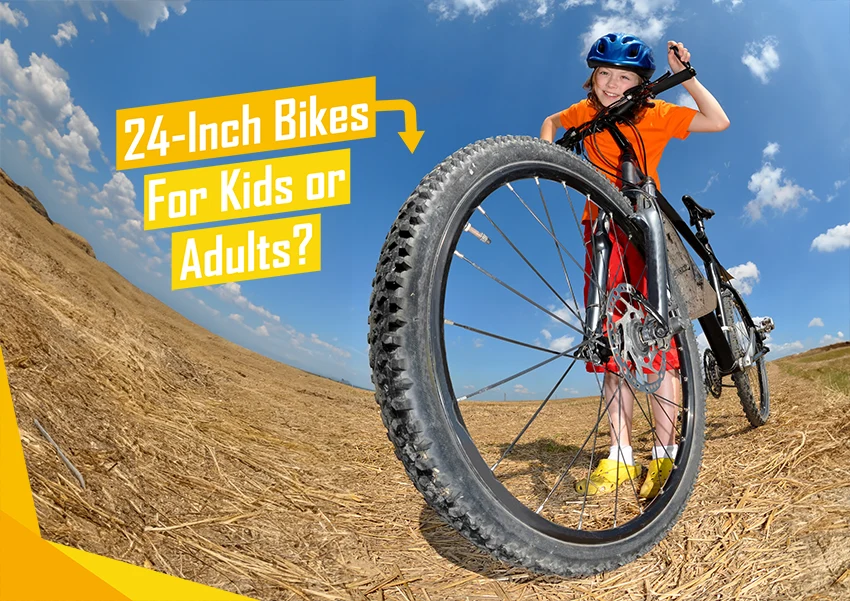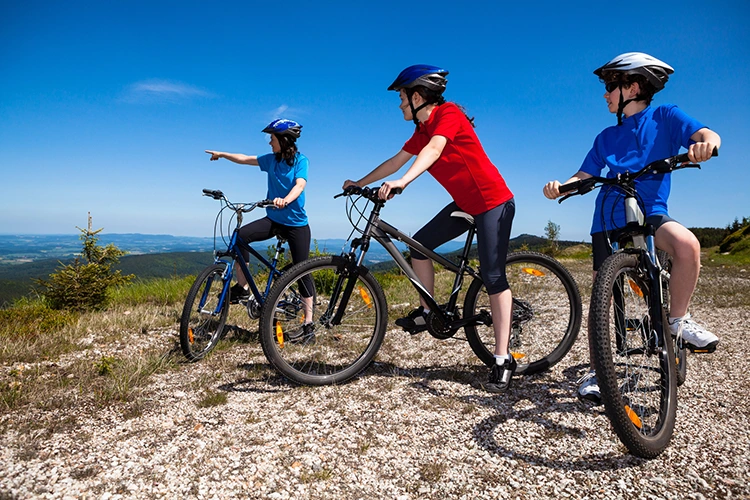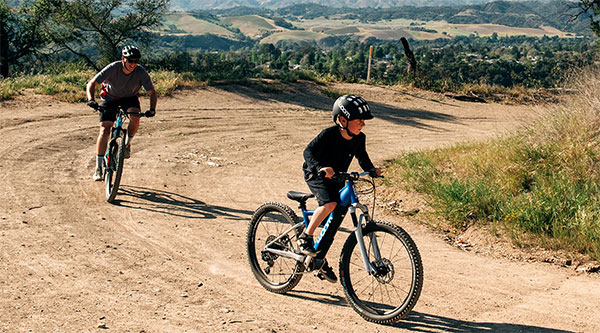What is a balance bike?
A balance bike is a bike without pedals, meant for very young kids — as young as 18 months. It is perfect as a first bike as it provides a natural and intuitive way to learn how to ride. Since balance bikes have no pedals, kids use their feet to propel themselves by pushing off the ground.
These bikes have no training wheels, so children stay upright using their feet. Kids’ balance bikes are also called running bikes, pedal-less bikes, glider bikes, etc.
What Is A Balance Bike Good For?
Balance bikes are a smart learning choice because they are much more natural than bikes with training wheels. Kids use their entire body while riding! A balance bike encourages kids to use their arms, push with their feet, and lift their legs when moving. It builds their strength, stamina, motor skills, coordination, and agility.
Kids’ balance bikes are also lighter than other types of bikes, so children can handle them with more ease.
What Is The Point Of A Balance Bike?
The idea behind a balance bike is to serve as a kids’ first (pedal-less) bike that leads them to their first real pedal bike. On average, kids need just 5 to 10 minutes to transition from a bike without pedals to a pedal bike.
Learn more: How to Teach Your Kid to Ride a Bike
If they’re making that transition from a bike with training wheels, they need to relearn how to balance once again, so they’re back on square one.
Balance bikes are also safer to move over uneven surfaces and more fun to ride.
What Age Is A Balance Bike For?
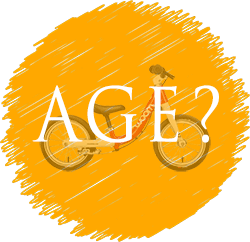 Typically, kids can hop on a balance bike from the age of 1.5 years to around the age of five. The ideal balance bike age is between 1.5 and 2.5 years old, though. However, balance bikes come in different sizes and fit children of all ages.
Typically, kids can hop on a balance bike from the age of 1.5 years to around the age of five. The ideal balance bike age is between 1.5 and 2.5 years old, though. However, balance bikes come in different sizes and fit children of all ages.
Standover height on balance bikes is generally very low so kids can start riding from a very early age, basically as soon as they start walking on their own. The younger the better is the rule!
Is A Balance Bike Better?
A kids’ balance bike is a much better learning choice than bikes with training wheels, without a doubt.
It encourages kids to use their arms and core to maintain balance and lift their legs when moving. It builds their strength, stamina, motor skills, coordination, and agility. Balance bikes are also more fun, so kids learn faster.
Bikes without pedals enable children to ride further every day and have more confidence.
How Much Is A Balance Bike?
Balance bikes are relatively cheap compared to the value they offer to a kid.
They are also generally cheaper than pedal bikes and bikes with training wheels. The prices start at around $60 and usually don’t exceed $250. The average price is around $100 which is good considering kids can use one balance bike for several years.
With more expensive balance bikes, such as a Strider balance bike, you’ll get brakes, a bell, a sticker pack, footrests, etc.
Are Balance Bikes Better Than Training Wheels?
Kids’ balance bikes are better than bikes with training wheels for several reasons: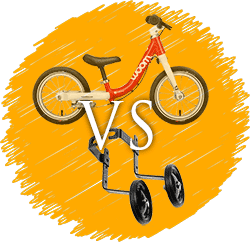
a) The bike is lighter;
b) The Sitting position is lower;
c) Kids can’t get stuck, which happens often with training wheels, and
d) Kids must maintain balance on their own, which doesn’t happen on a bike with training wheels where the kid simply bounces from one side to another.
Are Training Wheels Bad?
If you’re a parent and you’re wondering how to teach a kid how to ride a bike, this question surely popped into your mind.
Training wheels are not entirely bad because they can teach kids how to ride a bike.
But, this takes more time and more effort compared to balance bikes.
Pedal-less bikes have many advantages over bikes with training wheels when it comes to teaching kids how to ride a bike quickly and painlessly:
a) the bike is lighter
b) the sitting position is lower
c) they can’t get stuck which often happens with training wheels
d) training wheels only support kids by providing the so-called “false-balance” by bouncing from one side to another.
How Many Years Do Kids Ride Balance Bikes?
Kids typically ride bikes without pedals for around 3 years depending on when they start.
The younger they start riding, the longer they’ll use the same balance bike. Remember, the minimum balance bike age is just 18 months.
The majority of children become ready for a kids’ bike with pedals at the age of 4, but that’s not a definitive rule.
To make sure your child can use the same balance bike for a while, find a model whose maximum saddle height extends 2-3 inches past the kid’s current inseam length. That will provide sufficient room for growth.
How Does A Balance Bike Compare To A Tricycle?
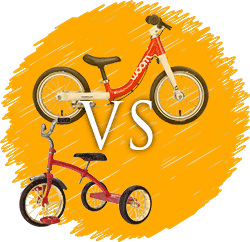 Tricycles are heavy, slow, dangerous on angled surfaces, and have a bad pedal position. Due to having three wheels, tricycles easily tip over on uneven surfaces, they’re slow, and awkward to steer.
Tricycles are heavy, slow, dangerous on angled surfaces, and have a bad pedal position. Due to having three wheels, tricycles easily tip over on uneven surfaces, they’re slow, and awkward to steer.
Tricycles also don’t encourage kids to think about balancing at all. On the other hand, on a balance bike, children are 100% focused on balancing, so there’s little chance they’ll fall and injure themselves.
They’ll also cover more distance on a balance bike, have more fun, and practice more.
Which Tire Is Better – Air Or Foam?
Both air and foam tires are a good choice on balance bikes.
Each one has some pros and cons. Air tires provide better cushioning and slightly better grip, but they are heavier and require heavier wheels. They also require pumping air into them from time to time.
On the other hand, foam tires are light, can’t get punctured, and require no maintenance. Overall, both are good choices since kids don’t weigh much, so tires don’t play such an important role.
What’s The Right Balance Bike Saddle Height?
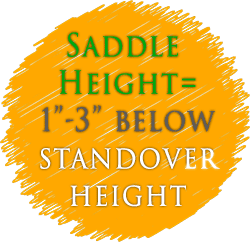 The right balance bike saddle height is about 1″ – 3″ below the kid’s standover height (inseam length). Another way to choose the correct balance bike saddle height is to make sure your kid’s feet are comfortably flat on the ground when their legs are fully extended.
The right balance bike saddle height is about 1″ – 3″ below the kid’s standover height (inseam length). Another way to choose the correct balance bike saddle height is to make sure your kid’s feet are comfortably flat on the ground when their legs are fully extended.
This way, they’ll get maximum control, easily push off the ground, and gain the most confidence.
How To Pick The Right Size?
There are multiple sizes available and something for every height. It might seem a bit daunting at first, but it will get easier once you get the hang of it.
The easiest way to figure out the right size is by considering the balance bike age.
| Age | Wheel Size |
| 2 to 4 | 12-inch bike |
| 3 to 5 | 14-inch bike |
| 4 to 6 | 16-inch bike |
| 5 to 8 | 18-inch bike |
To get a closer idea, and to see other options, see our guide on how to choose the right size for balance bikes or kids bikes.
Keep in mind that there are some balance bikes that have the option to install the pedals. That way their balance bike can just be transformed into their first pedal bike.
Why You Should Get One?
1. Kids Sleep Better
Kids who spend time outdoors use more of their energy and therefore sleep better at night and fall asleep much faster (that means parents sleep better as well). Children can spend a lot more time on a balance bike than on a bike with training wheels or a tricycle.
Usually, children can easily cover several miles around a park in a day on a push-bike, which is unthinkable on other types of kids’ bikes. Therefore, they will be more active and become more tired.
2. You Can’t Choose The Wrong Size
Each model fits every kid. 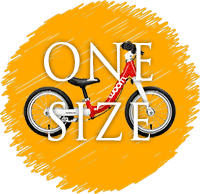 There are no Small or Large sizes to choose from.
There are no Small or Large sizes to choose from.
Some kids’ balance bike manufacturers (for example Strider Balance Bike) offer extended seat tubes that you might need when your kid gets older. But, other than that, all you need is a balance bike.
If you need reassurance, manufacturers usually point out the minimum saddle height that you can compare to your kid’s inseam length and make sure that the bike is a good fit.
3. Kids Learn Fast
How to teach a kid how to ride a bike fast? Do it with a bike without pedals.
A typical 2-year-old learns how to ride a bike very fast on a balance bike. In the beginning, they walk slowly and cautiously, but then they go faster every day. In a few days’ time, kids usually zoom around parks or backyards with their legs in the air.
Later on, when transitioning to a pedal bike, most kids will need minutes or hours at most to start pedaling on their own.
4. They Are Easy To Use
Balance bikes are very easy to use. They have low standover clearance, so you don’t need to help your kid get on and off the bike.
They can simply sit on the saddle on their own and off they go! Moreover, pedal bikes don’t have pedals, brakes (some of them do),
or derailleurs, which usually need to be explained to children. Therefore, it often takes kids a few minutes before they figure out how balance bikes work and start having fun running around on them.
5. You Can Walk Longer Distances
Kids can easily coast around with a balance bike and cover a mile or two around a park. That’s something that’s very difficult to do using a pedal bike with training wheels or a tricycle, both of which are slow and awkward. Once kids become comfortable using a balance bike, they can push with their feet, gain momentum, and cruise for long stretches of time. That’s good news for parents as well, as they can jog or walk along their kids and get a good workout in.
6. Better Physique
Balance bikes are excellent for child development.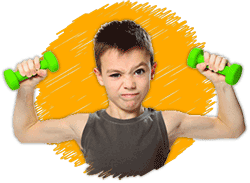
It encourages kids to use their entire bodies. They use their arms to steer and balance and lift their legs when moving which strengthens the core and leg muscles.
Therefore, balance bikes build strength, stamina, motor skills, coordination, and agility. This is very important nowadays, as children spend more and more time inside, watching TV or playing games on smartphones and tablets.
7. Kids Become Smarter
Kids’ balance bikes are good for both physical and mental development in children. It helps them develop their motor skills and intelligence. Place obstacles on the road to encourage your kids to think out of the box and find a way to complete the challenges. Try placing different kinds of obstacles and you’ll see how kids take different approaches and use different speeds for each of these. Not only is this a great exercise for the brain, but it also makes riding a bike super fun.
8. You Can Relax
If you are going for a park or a pump track, you can just relax and watch them ride. There are some activities where you must be active but balance biking isn’t one. When a child is riding a bike with training wheels or a tricycle, it is advisable for the parent to be nearby if the bike tips over. That’s not the case with push bikes. If kids lose balance, they can quickly regain it on their own. So, take some time for yourself to relax and watch your kids having loads of fun.
9. It’s A Perfect First Bike
A bike without pedals is the perfect first bike for any child. We recommend that parents not even consider getting a tricycle or a bike with training wheels. Balance bikes are extra fun, super easy to use, and last for a very long time. They’re also the best learning tool when it comes to preparing a child to ride their first pedal bike once they become older.
10. It Is Relatively Cheap
Balance bikes are very affordable and offer great value for the money. On average, they cost between $60 and $200, and rarely have a price tag steeper than $250.
The average use period is 3 years, which makes the cost per year quite low.
There are few things that can get broken on a balance bike, so they can be inherited or resold when you no longer get any use out of them. Popular brands, such as Strider balance bike, also maintain a good resale value over years.
11. It Is Repair-Free
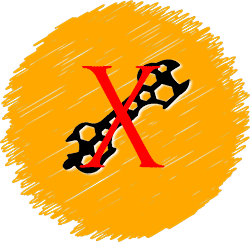 Balance bikes are basically repair-free.
Balance bikes are basically repair-free.
There are no parts that can break or malfunction in ordinary use, so you don’t need any skills to keep them going.
The only moving parts on a kids’ balance bike are the wheels and the handlebar, and they almost never break under normal circumstances.
Therefore, you don’t need to think about any future expenses — it’s a one-time purchase.
12. It Has Low-To-No-Maintenance
Bikes without pedals require low to no maintenance. They have no pedals, no chain, and no chainrings or cogs. Therefore, you don’t need to think about cleaning or lubricating the chain and the drivetrain. Many balance bikes also don’t have brakes, so you don’t need to adjust them or change the brake pads. The only maintenance you should do is pump some air into the tires – if your balance bike has air tires in the first place.
13. Kids Fall Softly
Thanks to a lower seating position, kids don’t get hurt when they fall. Just make sure to teach them how to brake so they don’t pick up too much speed. In general, falling when riding a balance bike is much rarer than falling from a pedal bike. Kids usually have their feet close to the ground at all times, so if they lose balance, they’ll place their feet on the ground to get back in control.
14. Kids Learn To Take Care Of Their Things
Buying your 18-month-old toddler a balance bike is an excellent way to teach them about responsibility. Urge them to take good care of their things at an early age and they’ll keep that attitude when they get older. For example, when they finish riding, ask them to put the bike back “in its place.” Also, they can help with washing the bike if it gets dirty, which can be both useful, educational, and fun.
15. It Improves Their Physical Health
The lack of physical activity in children nowadays is quite alarming. Children of all ages spend more and more time inside, in front of their computers, or slouched over their smartphones and tablets. Therefore, more and more children are becoming overweight or obese. Balance bikes are a fantastic way to keep the weight in check, maintain good physical health, and promote healthy physical and mental development.
16. Balance Bikes Have Good Reselling Value
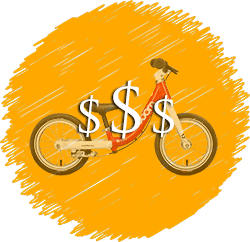 Balance bikes have very good reselling value since there are few parts on them that can get broken. There isn’t a big difference between buying a new and a used balance bicycle, except for the aesthetic quality. Therefore, once your child grows and transitions to a pedal bike, you can get a good chunk of your initial investment back. That’s not always the case with pedal bikes which can get beat up after some time — think creaking bottom bracket, loose bearings, rusty chain, out-of-true wheels, etc.
Balance bikes have very good reselling value since there are few parts on them that can get broken. There isn’t a big difference between buying a new and a used balance bicycle, except for the aesthetic quality. Therefore, once your child grows and transitions to a pedal bike, you can get a good chunk of your initial investment back. That’s not always the case with pedal bikes which can get beat up after some time — think creaking bottom bracket, loose bearings, rusty chain, out-of-true wheels, etc.
17. Can Be Used By Younger Siblings
The right balance bike age is quite diverse, so balance bikes can be passed on from one child to another. When your older child transitions to a pedal bike, your younger child can inherit their brother’s or sister’s bike. That means you don’t have to spend money twice, and you can use one kids’ balance bike for six years and more. When you don’t need it anymore, you can sell it or gift it to a friend or someone in your family.
18. Easy To Carry Around
Incredibly low weight is one of the main benefits of balance bikes. They usually weigh around or less than 10 lbs, which is pretty lightweight. Kids have no problems lifting the bike over obstacles or carrying it around when need be. Moreover, if they fall and the bike falls over them, they will not get injured because the bike has very little weight. Low weight is also excellent for confidence, as kids usually feel they have more control and are not afraid to give balance biking a try.
19. Prepares Kids For Their First Pedal Bike
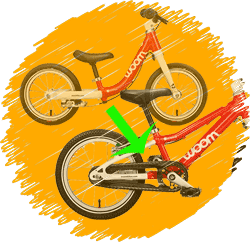 Balance bikes are a phenomenal learning tool to prepare children for riding a real kids’ pedal bike.
Balance bikes are a phenomenal learning tool to prepare children for riding a real kids’ pedal bike.
They teach kids proper two-wheel balance, so the transition to a real bike is much less painful.
Once they hop onto a pedal bike, instead of thinking about balance, they’ll be able to focus completely on learning how to turn the pedals, brake, and shift gears.
On the other hand, when transitioning from training wheels, kids need to unlearn everything they learned about balance and start from scratch.
20. Teach The Importance Of Helmets
You should talk to your children about the importance of wearing a helmet from the moment they get on a balance bike for the first time.
If you teach them how to use a helmet (which you should ALWAYS do!) and present it as something fun, then they will always ask for a helmet before going for a ride.
This way, you will help them create a good habit for the future, but also protect them from hitting their head if they fall and getting injured.
21. It Doesn’t Take Much Room
Pedal-less bikes are very small, light, and don’t take much room. You can easily store them in your home, even if you live in a tiny apartment. They can fit in your closet, under the bed, or in some small corner. If you always use a kids’ balance bike in a park, you can simply keep it in the trunk of your car. It won’t take too much space and it will be at hand whenever you need it.
22. They Will Learn To Follow Traffic Rules
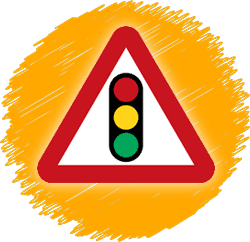 Parents must teach their kids about the most important traffic rules and traffic signs. What better and safer way than on a balance bike! A good way to approach this is to create a traffic polygon with make-shift traffic signs and enforce some traffic rules. Kids will find it to be a fun game and they’ll learn valuable lessons along the way. This way, parents can prepare their kids for entering real traffic at a very early age.
Parents must teach their kids about the most important traffic rules and traffic signs. What better and safer way than on a balance bike! A good way to approach this is to create a traffic polygon with make-shift traffic signs and enforce some traffic rules. Kids will find it to be a fun game and they’ll learn valuable lessons along the way. This way, parents can prepare their kids for entering real traffic at a very early age.
23. Great When Walking With A Stroller
Balance bikes are an excellent choice for parents who have kids of different ages. If you have a smaller child in a stroller, you can walk with them and the older child can ride along on a balance bike. Therefore, they won’t get bored by just walking next to you and become nervous and difficult to handle. Kids cannot pick up too much speed on a balance bike, so your walking pace will be similar to their riding speed.
24. Last But Not Least: They Will Love It!
Kids fall in love with balance bikes very easily. What’s not to love? They’re easy to understand, easy to use, and super-fun! I still haven’t seen a child that does not enjoy gliding on a pedal-less bike. Children often look up to older kids and adults and want to imitate them. When riding a balance bike, they feel older and more serious, so they simply don’t want to get off of it.
FAQ
What is the point of a balance bike?
A balance bike is an easy and intuitive way for children to learn how to ride a bicycle. This is a bike without pedals so kids can easily master balance by using their feet for support. Having no pedals, gears, or even brakes also simplifies the whole process and lets children focus solely on balance.
Are balance bikes worth it?
Balance bicycles are definitely worth the investment. This is the fastest and safest way for children to learn how to ride a bicycle. Plus, most models have adjustable saddle and handlebar height, so the bike can grow with the child. On top of that, they are cheap and easy to maintain.
Are balance bikes a waste of money?
Balance bikes are definitely not a waste of money. As a matter of fact, this is probably one of the best investments you can make for your child. Balance bikes are affordable, yet they are effective, easy to maintain, and loads of fun to use. It’s the easiest way for children to learn how to ride a bike.
What age are balance bikes for?
Children can start riding a bike without pedals as soon as they turn 18 months old and keep riding until they are around 5-6 years old. However, this range is not definitive, as some children are smaller than others at the same age.
Can you put pedals on a balance bike?
The majority of balance bikes do not allow you to add pedals later on. However, there are some models that do have this option. This is a great way to help your children learn how to ride and then allow them to continue riding the same bike.


